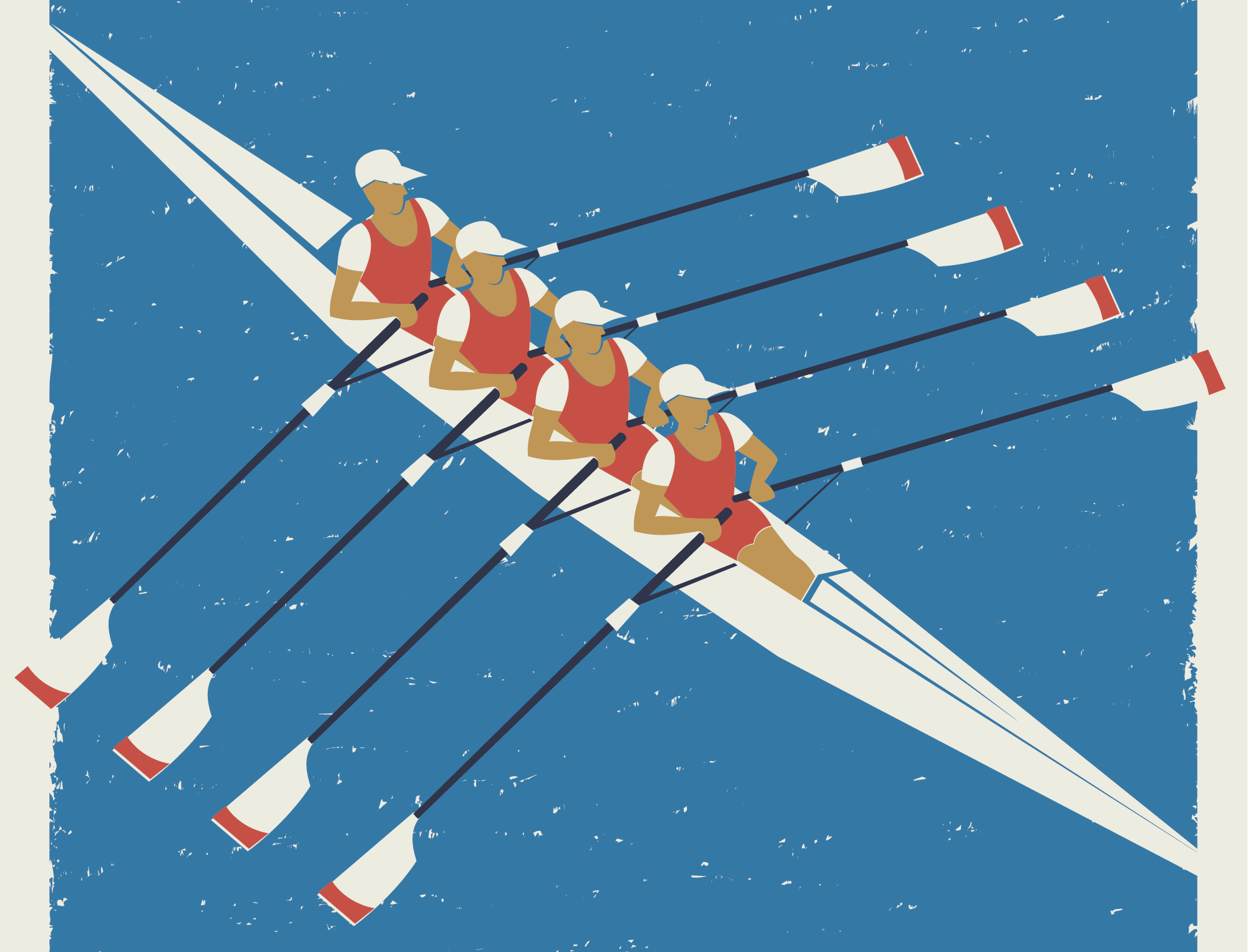In many respects, rowing is a highly paradoxical sport. Broadly speaking, all rowers in an eight-seater boat do the same thing: pull the oar through the water as smoothly as possible, with the force and frequency dictated by the cox. Yet, something different is expected of each rower depending on where they are positioned in the boat. For example, the person in the bow seat must be strong – just like the rest of the team, yes – but they must also be precise because the boat goes wherever the bow goes. Any deviation in this rower’s stroke has the potential to send the boat off course.
There are bows in every organization. Each department, team, and even initiative within a company has a bow, a seat from which the messages and ideas are communicated to the group and are shared clearly and regularly (ideally) with the rest of the company. In addition, there are certain departments that, as a whole, act as a bow. These departments, such as Marketing and Communications, Sales, Customer Service, interact with the customer – be it via the website, social media, or in-person – and dictate the speed of sales and customer satisfaction. They therefore also determine the organization’s stability and direction. If the bow or frontline teams in a business do not deliver the product to the customer effectively, the company inevitably suffers.
Seats four, five, and six in the boat are often referred to as the engine room of the team and these rowers tend to be the largest and strongest in the boat. The speed of the boat ultimately depends on their sheer power and how effectively the hammers, as they are called, channel their strength through the oars and into the water. The engine room of a rowing boat is akin to the product design team in an organization. It takes the hammers many hours of training and huge amounts of muscle to get to the point of pushing the boat through the water, just as it takes considerable mental fortitude to be constantly adapting products to the needs of each customer, each market, while remaining consistent to the values of the organization. The speed required to deliver a product on time (often in record time if the organization wants to be the first) depends on this engine room.
It’s often the case that amount of communication needed is inversely proportional to the degree of trust.
Seat number seven is a kind of bridge from one side of the boat to the other. The rower here must be nearly as strong as those in the engine room while being attuned to what is going on throughout the boat. They must match with precision the pace and power set by the rower ahead of them in seat number eight, known as the stroke, and relay that information effectively to the engine room. The stroke marks the speed and power of the boat and sits face to face with the cox. Anyone in a position of leadership knows how difficult the job of the stroke is because this role entails the ability to listen to the cox (their direct boss), execute orders quickly and with efficiency, and galvanize the rest of the team to row at the same speed. If all goes as planned, the entire boat works like a well-oiled machine, with each rower participating as a vital link in the chain that moves it forward.
In most organizations, there are always two sides to a leadership position, whether that position is part of middle management or at the more senior levels. In many cases, they are the stroke to their direct boss and the cox to their team. As the boat gains momentum, the cox’s role is to manage all that happens in the boat from both a physical and a psychological perspective. Good coxes know their rowers’ strengths and weaknesses inside out and understand how to get the most out of each one. They must get the eight, often exhausted, rowers to sink their oars even deeper and try even harder, even when all seems lost. The cox of the workplaces is usually a CEO or department head.
The cox, along with the stroke, must have in-depth knowledge of the market, the product, the product line, and the competition, and must also operate from a solid foundation of expertise and trust. Without the latter, communication with the team breaks down. It’s often the case that amount of communication needed is inversely proportional to the degree of trust, so in order for the boat – or company – to operate successfully, communication and trust must flow smoothly. Every individual within the team must implicitly trust their teammates to row and perform their allotted tasks to the absolute best of their ability. When each person on the team rows as though their life depended on it, whether in a small sales team or on a board of directors, an organization achieves what is called “swing” in a rowing boat.
In a now well-known memo, Microsoft CEO Satya Nadella addressed this issue of finding the company’s swing. He had read Daniel James Brown’s book, The Boys in the Boat, and realized that both rowing and companies are embedded with yet another paradox: the faster the boat goes, the harder it is to row well. As teams and the organization grow and accelerate their pace of sales, it is harder to coordinate the company’s movements and the chance of making a mistake becomes that much greater.
In an organization or team, each person, each individual, matters – and ultimate success is achieved when each member is willing to dovetail their individual talent with the needs and capabilities of their team, i.e. when they are willing to pursue the common goal rather than individual status. It is therefore important to focus on promoting close contact with our team and company colleagues as a way to increase trust, harmony, and solidarity. This creates a network that is grounded in a shared interest, which means that when a member needs help or is floundering, the immediate response from the rest of the team is to work together to overcome the challenge and keep the boat moving efficiently in the right direction. After all, the goal is to work as a team and adapt to constantly changing environments and remain ahead of the competition – and this entails finding the swing, not simply staying afloat.
© IE Insights.











